The Jesus movies from the 1950s and ’60s prepared me for a different landscape. I expected Israel to be flatlands and sand, the kind of sunburnt hardscrabble you find in West Texas. But on the bus ride north from the international airport in Tel Aviv, I found rolling hills of wheat and sorghum, lush green grass, wild yellow mustard and broom plants, and large fist-like boulders of limestone, sandstone and chalk that seemed to grow out of the earth like a crop.
My fellow pilgrims and I lodged that night in an Italian Franciscan hotel and restaurant called Mount of the Beatitudes because of its location on the steep hillside where Jesus delivered his famous contrarian sermon.
The Jesus movies from the 1950s and ’60s prepared me for a different landscape.
About a half hour before Sunday’s dawn a rooster crowed in the yard of the Mount and the jet-lagged sleepless waited in the half-dark on a promenade 200 feet above a hazy gray Sea of Galilee that was less than a quarter mile off. The garden’s trees were filled with the lovely noise of waking, chirping finches and larks, swallows and warblers until a golden sun seemed to gradually ignite over the hills of the azure Golan Heights and then serenely moved overhead. We pilgrims all had to have been stunned by the same bracing thought: Jesus woke to this.
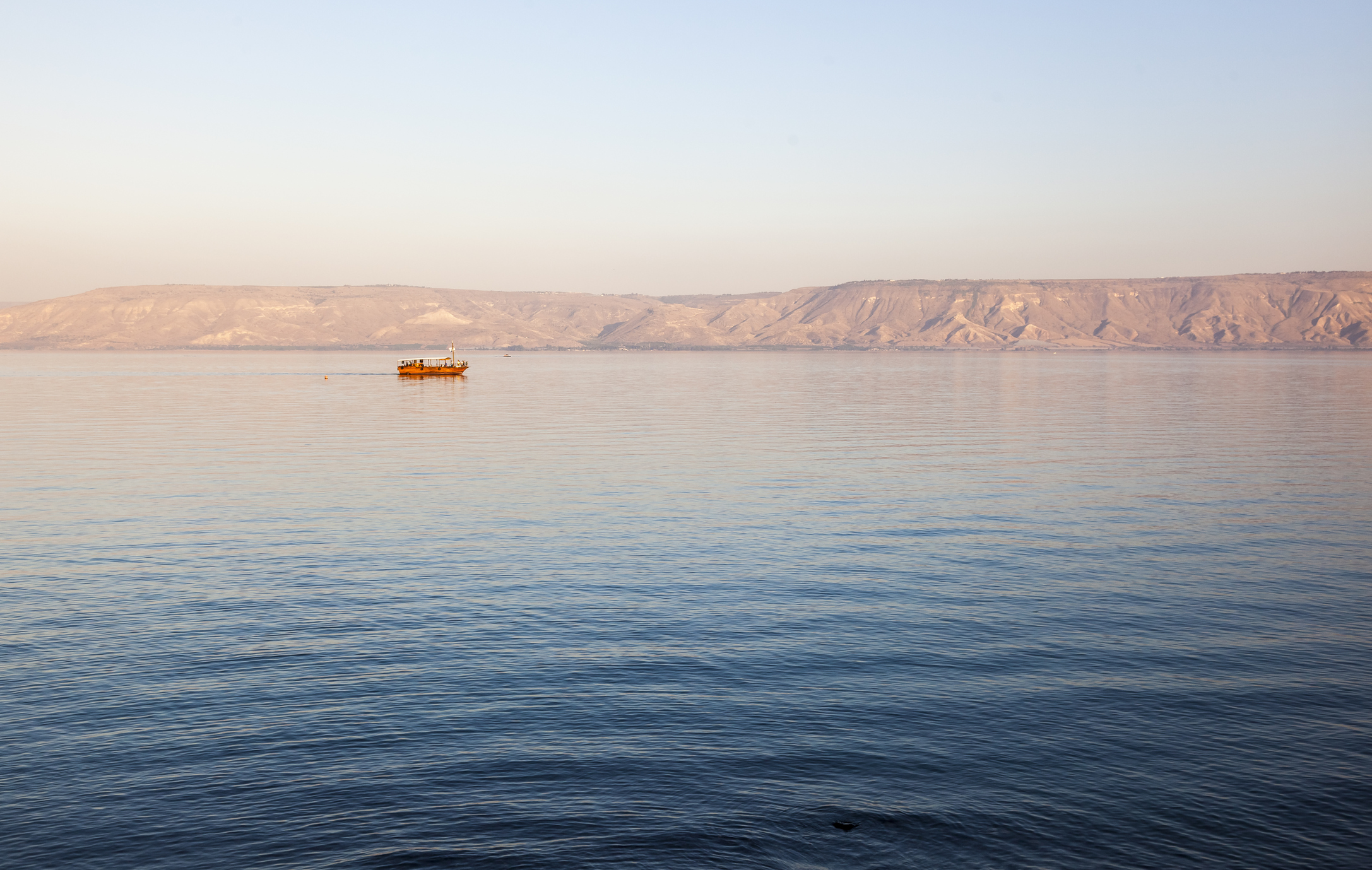
The Sea of Galilee was larger than I had imagined: 13 miles long and eight miles at its greatest width and at 686 feet belowsea level the lowest freshwater lake in the world. Called Lake Gennesaret by the evangelist Luke, and the Sea of Tiberias by John, the whole of it was formed by a volcano that temporarily dammed the flow of a Jordan river fed by springs and creeks in northern Lebanon. Rabbis wrote of it, “Although God has created seven seas, yet He has chosen this one as his special delight.” Yet it can be violent, too, when the winds funnel down into the basin from the north. Waves as high as 10 feet have been recorded surging over the downtown streets of Tiberias.
The fishing is still good there on the lake. There is a kind of tilapia, or St. Peter’s Fish, that is often cooked in a frying pan and served with the head, fins and tail still on; a larger whiskered species of carp; and schools of the Kinneret sardines that were famously pickled in Magdala in New Testament times.
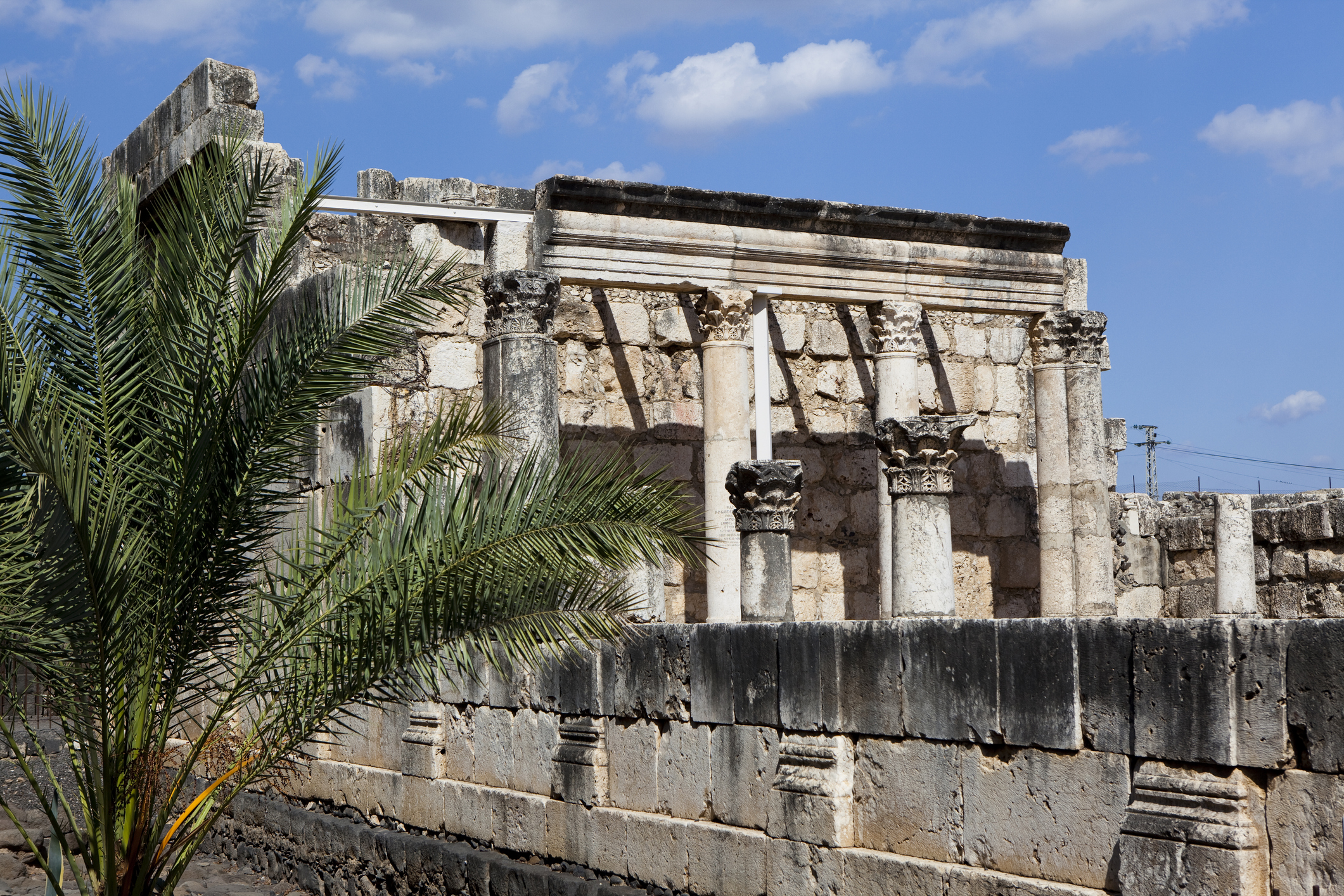
Our first journey was north just a few miles to Capernaum, Jesus’ hometown during his public ministry and the harbored fishing village of Peter, Andrew, James and John. The Roman centurion whose servant Jesus healed from afar is credited with the construction of the first-century synagogue there, now in stately ruins. And recent excavations have discovered a warren of apartments with shared walls of square black basalt blocks, each “house” so small I was reminded of Mark Twain’s complaint of his shipboard stateroom, that it was large enough to swing a cat in but not without damage to the cat. The church in Capernaum is high off the ground to reveal beneath its glass floor the stacked brown rock of a multiroom house reputed to be that of St. Peter, his wife and the ill mother-in-law whose hot fever Jesus cooled with his touch.
Less than two miles south along the lakeshore was the shady glen of Tabgha—meaning in Greek “seven springs”—the site of Jesus’ miraculous multiplication of loaves and sardines for the thousands hungrily following him. And it was also the location of Christ’s post-resurrection appearance to his fishermen disciples when, after eating the tilapia he had cooked for them, he took Simon aside and told him, “Thou art Peter, and upon this rock I will build my church, and the gates of hell shall not prevail against it.”
The Sea of Galilee is at least 20 feet shallower now than it was in olden times, so giant boulders that waves must have burst against are now isolated on a swath of sand that we walked, some of us wading in the cool, clean, tranquil water. Each site we visited was introduced by a reading of a relevant passage from the Gospels and then there was an hour or so for contemplative prayer.
St. Ignatius of Loyola asked those doing his Spiritual Exercises to apply all five senses to each biblical scene to give it tangible immediacy.
Writing in the 16th century, St. Ignatius of Loyola asked those doing his Spiritual Exercises to apply all five senses to each biblical scene to give it tangible immediacy. It was a practice easily accomplished on a tour that was so like a graced retreat that I often worried about breaking the silence.
Looking southwest from the Mount of the Beatitudes, one could see a rift in the green mountains, once forested with fir trees, where the 20-mile highway to Nazareth was now. But that road was a late invention. Jesus would have avoided the steep hills and dales in his hard trek from Nazareth to Capernaum by hiking northeast along a high ridgeline, with only a forced, jarring slide down a cliff to get to the fertile flatlands and the sea.
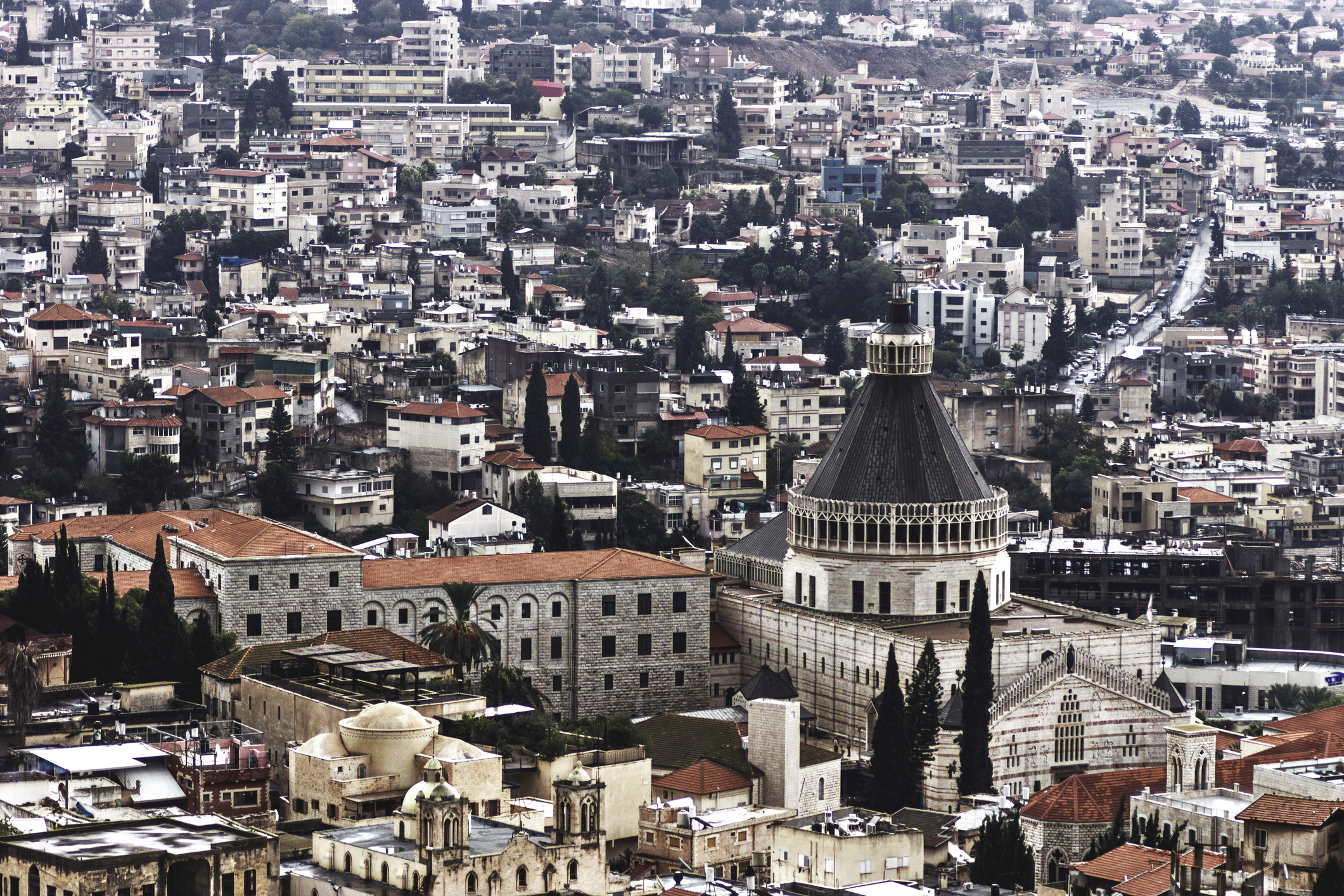
In Nazareth, we found a busy Palestinian, majority-Muslim city where there had been just a forgettable Jewish village when Jesus grew up there in a cave on a high hillside. We had Mass in the Basilica of the Annunciation in honor of the girl Mary’s agreement, made perhaps at age 14, to become a handmaid of the Lord and the mother of God’s son. A few miles from Nazareth is Cana, where Jesus performed his first miracle by turning huge jars of water into wine at his mother’s request. Married couples on our pilgrimage repeated their wedding vows in Cana, as did those committed to religious life.
In Magdala, we lunched in a fine restaurant then went out onto the sea in excursion boats, drifting in hymns and emotions of companionship with Jesus before visiting a museum dedicated to a newly recovered sailboat from the first century. Constructed with cedar planks and a variety of scrap wood, it was large enough to hold 15 fishermen and flat-bottomed so that it could get close to the shoals to dragnet sardines. The sloops and yawls of my imagination were given a healthy adjustment.
Israel is just a sliver of a nation—half of it desert—that could fit tidily inside our Lake Michigan.
Israel is just a sliver of a nation—half of it desert—that could fit tidily inside our Lake Michigan, so it was just a short journey south to get to Jericho in an oasis on the Wadi Qelt more than 800 feet below sea level. East of Jericho is thought to be the spot on the Jordan River where, in a gesture of humility, Jesus was baptized by an Elijah-like John. Our guide accurately described the surprisingly narrow river’s green as the color of Mountain Dew but it seemed to me more like a lawn pesticide. Still, some Russian Orthodox women with white linen sheets over their underwear risked repeated plunges into the Jordan in a renewal of their own baptisms.
The biblical Bethany is where Jesus dined with the sisters Martha and Mary and wept at the tomb of Lazarus before raising his dear friend to life. Established on the eastern slope of the Mount of Olives, Bethany was just a mile and a half from Jerusalem overland by foot but a longer circular ascent in our touring buses as they groaned in their climb to the high altitude of Jerusalem.
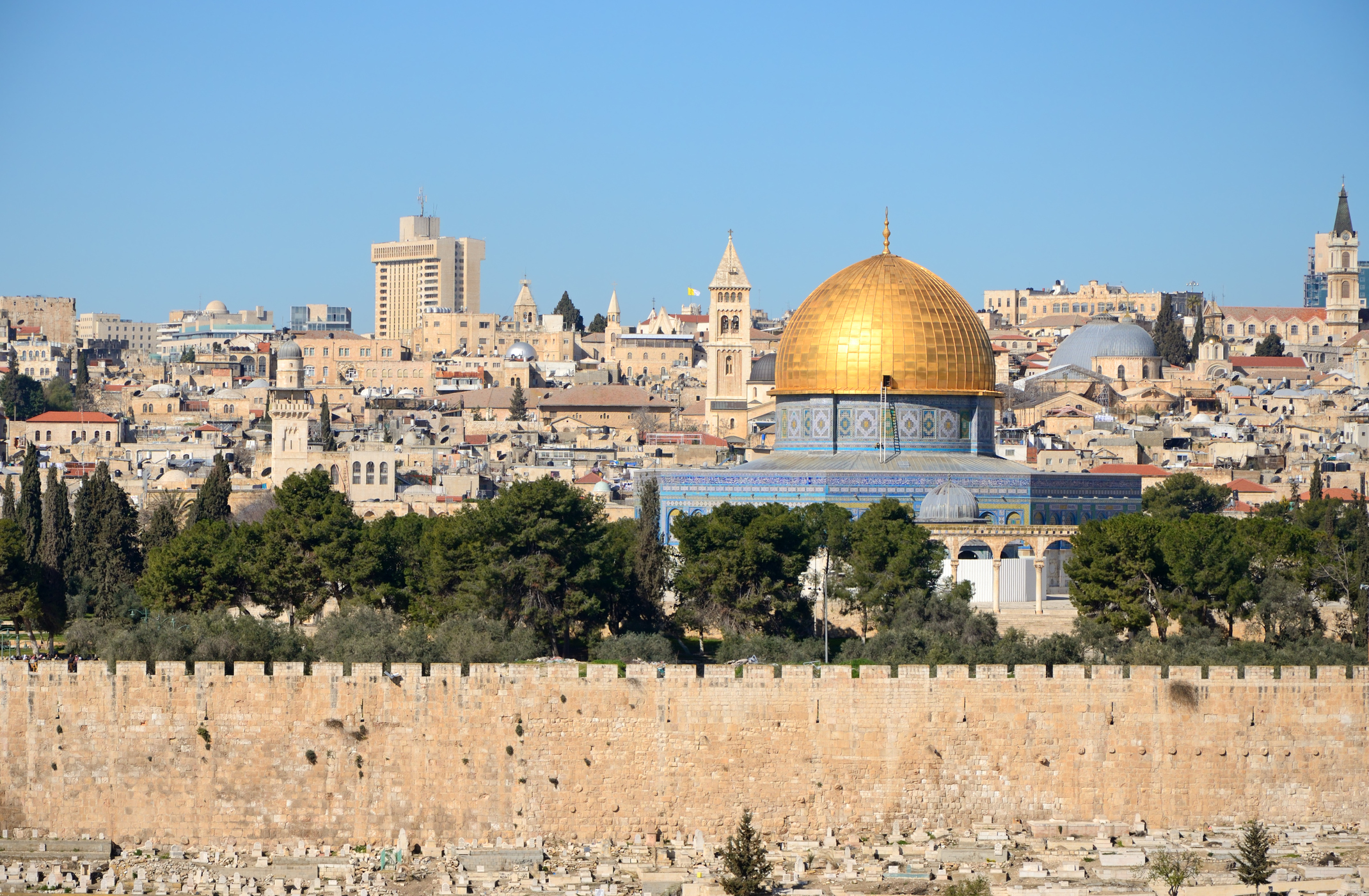
The Old City there is predominantly one or two-story white buildings on terraced heights that were furrowed by ravines and surrounded by a tall fortification of stone walls whose color the fancy would call ecru. Ringing the Old City are chains of high hills with names like Mount Scopus, Mount of Offence and Mount of Evil Counsel.
We were staying outside the walls near the New Gate at the Hotel Notre Dame. It is run by a pontifical institute and is just a 10-minute walk to the Church of the Holy Sepulchre. But the first site we visited was six miles south and chronological: the birthplace of Jesus in Bethlehem (meaning “House of Bread”). The main entrance to the Church of the Nativity has over many centuries and under various governments become such a small doorway that guests have to get on their hands and knees to crawl inside, and within is not a manger and the representative statuary of a tableau but the silver lamps and candles and jewels of Byzantine decoration.
I found myself admiring the intensity in both men, thinking to myself: You are standing on holy ground.
Late in the afternoon some of us went into the Old City to pray at the Wailing Wall, the lone 100-yard-long remains of the huge, grand Jewish temple built by Herod the Great on 35 acres. To my right as I nodded in my Kaddish was an angry old man in foul rags and tatters reading from a much-used prayer book, and to my left was a Hasid in a black suit and flat-brimmed hat who loudly recited Hebrew as he rocked in his lamentations and periodically twirled his hand overhead in histrionics I could not decipher. Yet I found myself admiring the intensity in both men, thinking to myself: You are standing on holy ground.
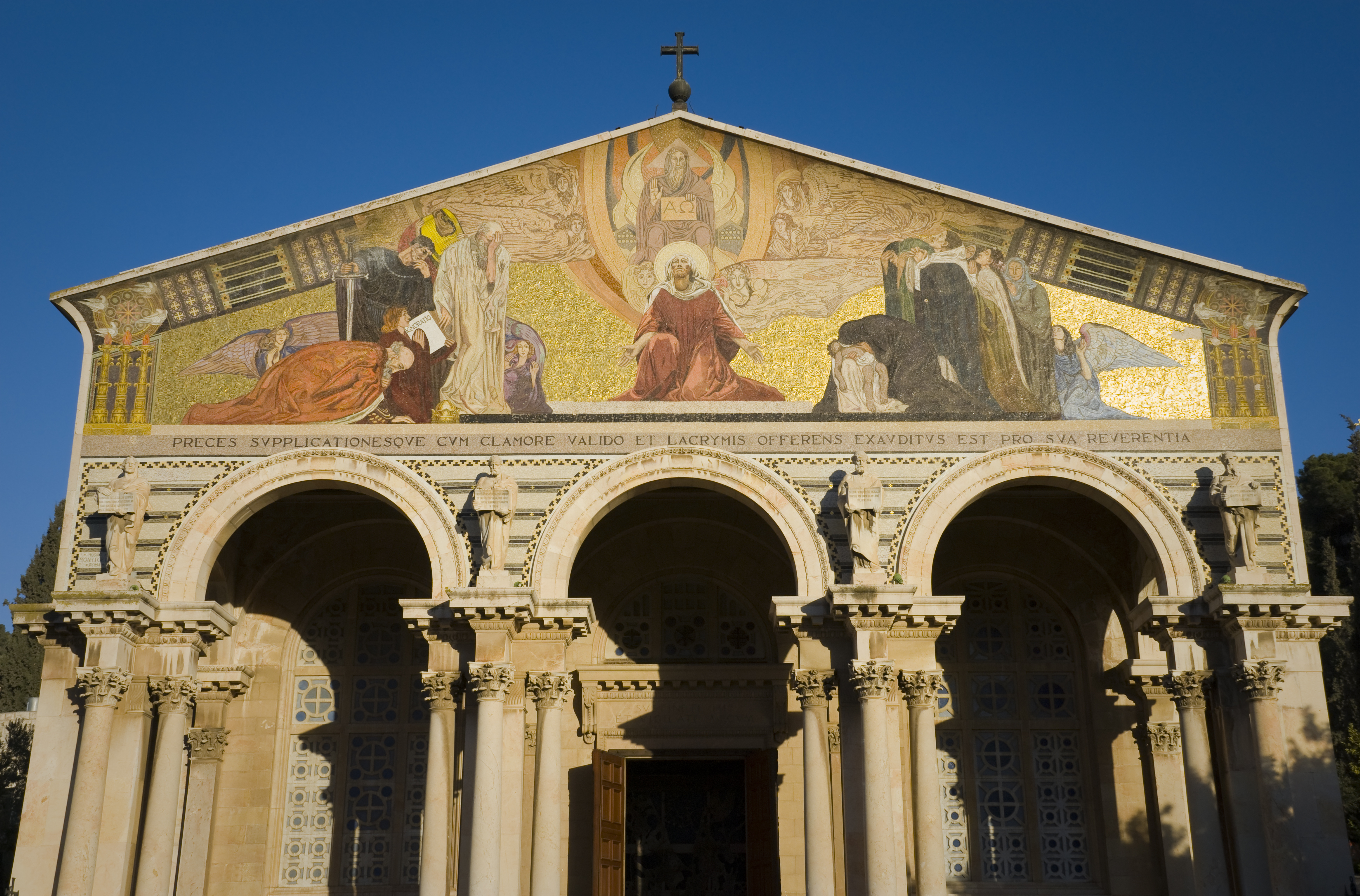
That holiness became more intense the next day as we celebrated Mass in a basilica at Gethsemane—Aramaic for “olive press”—and spent an hour in the adjacent garden of betrayal at the foot of the Mount of Olives. Jesus and the twelve must have often withdrawn there because of the magical panorama of the deep Kidron Valley and its nearly vertical uphill rise to the high fortification around a city that probably glinted gold with torchlight. But we were forced to imagine then the Lord’s agony in the garden. Some of us sat pensively against the twisted olive trees, all too aware that we often have been sleeping disciples rather than sharers in the wracked night watch of Jesus. I thought of what he wanted from me, and I heard him answer: Your prayers and attention.
The Lenten feeling became even more intense in the house of Caiaphas where our Savior was harnessed by ropes in order to be lowered through a cistern to a foul, infested pit where he spent the night, shackled, defeated and utterly alone while his disciple Peter heated his hands by a fire and, as a rooster crowed, shamefully and fearfully denied he even knew the Nazarene. I found myself praying backward in time to give Jesus endurance, freedom from pain and the solace of a final triumph over the unjust punishment and execution that was forthcoming.
The final Saturday on our pilgrimage began with a Via Dolorosa that started at Antonia, the praetorium where Pontius Pilate interrogated Jesus, and zig-zagged along alleyways between souvenir shops on a gentle rise of limestone pavement to Golgotha, or the “hill of the skull,” which is now commemorated in a lavishly ornamented choir loft in the Church of the Holy Sepulchre. On the floor nearby is the flat, polished slab where the lifeless body of Jesus was laid out and anointed with myrrh and olive oil that was provided by a wealthy follower, Joseph of Arimathea. He offered his own nearby limestone shelf, hewn from the wall of a cave, as interment for Jesus, and over the centuries it has become the holiest of shrines. It is a place that you have to stoop to get inside and whose emptiness is further evidence of Christ’s resurrection from the dead, the wonderful cause for our worship and pilgrimage.
We celebrated an Easter Mass before noon and that sunny afternoon visited the healing pool at Bethesda, which the Fourth Gospel described in a way that seemed allegorical but that recent excavations have revealed to be accurate. Right next to it is a pretty French church dedicated to St. Anne, where she is thought to have given birth to the mother of God. Our Palestinian guide Maheer sang a haunting Aramaic salute to Mary there. It felt like a poignant envoi sending us back to America with feelings of awe and enrichment and of having solved the mystery of a homeland filled with sacred energy that we want to return to soon.We will never read the Gospels in the same way again.


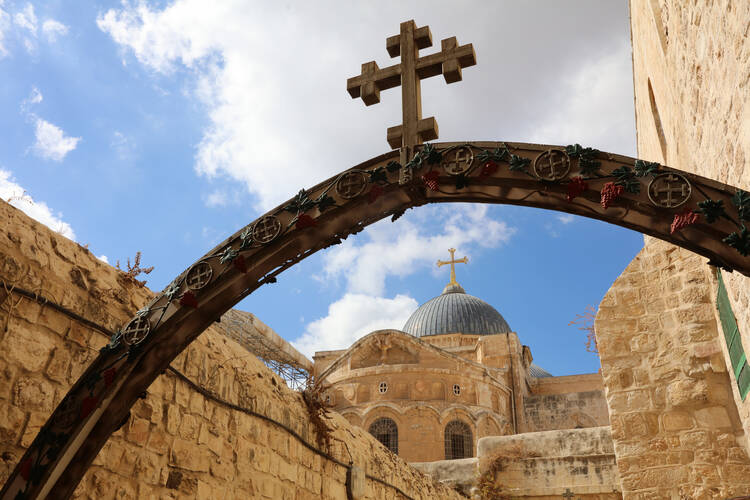







I beg to strongly disagree with this "travelogue." Visiting the state of Israel is no different than going to any other foreign country. Last year on our visit we found it "underwhelming." The obvious surfeit of décor and vague references to biblical accounts are a distraction. This is not the homeland of Jesus of 2000 years ago. It is a modern state with its own characteristics and religious divisions. Jesus walked on water at least 24 feet deeper. He never prayed at the wailing wall in Jerusalem. The Garden of Olives is really no more than a simple gulch with untended trees and weeds. Most places of worship are located in doubtful locations based on guesswork from long ago. In many cases, the ornamentation and local superstitions belie the real biblical significance. The simple life of Jesus is presented poorly. Over the centuries, the real locations and buildings are mostly destroyed by warring armies, earthquakes, blowing sand, and human building using the old as foundations. The reverential respect for certain locations is mysteriously resurrected by rumor, spoken tradition, changing emphasis, and rediscovery. To pretend otherwise is simply making it all up in the palaver of tour guides and tourism.
It is unfortunate that Mr. Evan's experience in Israel was disappointing, but as a fellow pilgrim with Ron Hansen this year, I share his impressions. America has published a beautiful and honest description of the recent pilgrimage. Is it exactly as it was 2,000 years ago? Of course not, but many sites powerfully evoke the imagination. I found Capernaum, Gethsemane, Bethany, and the Wailing Wall particularly strong. Are each entirely authentic? Perhaps not, and in some cases there are rival (Catholic and Greek Orthodox) sites, but as Fr. Martin often says if not here than somewhere nearby. Is some of it overly touristic? Of course, but Galilee and Jerusalem in the evenings especially had a special feel. Religious divisions and political conflict? Of course, then and now. It only makes the experience more interesting. You also see how people get along despite the negative media impression and feel a real desire to pray for peace in the Holy Land. I have been to 40 foreign countries or so and this certainly did not feel generic. May we all someday travel to or return to Jerusalem.
This description reminds me of how intimately connected Jesus remains to the human condition. God chose in Christ to be earth bound. He did not disdain or condemn physicality, but infused it with spiritual power. “Jesus put his fingers into the man’s ears. Then he spit and touched the man’s tongue” (Mark 7:33). Later, in the town of Bethsaida, Jesus healed a blind man. Again, the miracle was preceded by spitting: “He . . . spit on the man’s eyes and put his hands on him” (Mark 8:23). To heal a man born blind, Jesus “spit on the ground, made some mud with the saliva, and put it on the man’s eyes” (John 9:6).
We forget this earthy reality of our Lord in our hygienic worship liturgies. He was and remains God with us in our world of sounds, smells, textures, and sight. He knew the smells of cooking fish and fresh bread, the taste of wine, the feel of the wind on the Sea of Galilee, and yes, the body odors of the crowds pressing around him. From this article I am inspired to expand my anemic version of God as a host captured in a gold plated tabernacle, and to see, feel, hear, smell, and touch God still among us in the "ordinary" persons and things of life.